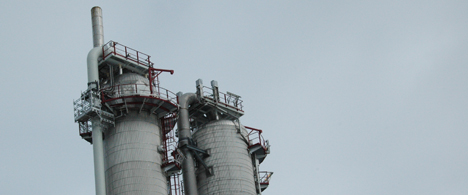
The carbon injection systems at Melkøya are now online, pumping carbon dioxide to the Snøhvit field for storage.
Instead of emitting the carbon dioxide (CO2) resulting from the well stream that comes from the Snøhvit field to the air, the CO2 is reinjected into the ground and stored in a formation which lies somewhat beneath the gas-bearing formations on the Snøhvit field.
Green gain and knowledge
”By reinjecting CO2 beneath the seabed we strongly reduce greenhouse gas emissions at Melkøya. We will achieve an environmental benefit while we develop our expertise on carbon injection which may be useful in other areas,” says Edvin Ytredal, senior vice president for Snøhvit operations.
The carbon capture plant, compressors and pumps were put into regular operation at the Melkøya plant last weekend, and the first carbon flow yesterday reached the formation where it was stored. "We are currently pumping all CO2 into a closed geological formation beneath the Snøhvit field,” says Morten Svenning who is in charge of the start-up process.
At full capacity on Snøhvit, 700,000 tonnes of CO2 will be stored per year, which equals the emission volume from 280,000 cars.
Separating CO2
The natural gas which is piped from the Snøhvit field to Melkøya outside Hammerfest contains five to eight percent CO2. At the onshore plant on Melkøya, CO2 is separated from the natural gas and piped back to a formation at the edge of the Snøhvit reservoir, where it is stored 2600 metres beneath the seabed.
Stored beneath a sealing cap
CO2 is injected into a sandstone formation called Tubåen. A shale cap which lies above the sandstone will seal the reservoir and ensure that the CO2 stays underground without leaking to the surface.
Carbon storage on the Snøhvit field is StatoilHydro’s second large carbon storage project in Norway. One million tonnes of CO2 are already stored annually beneath the seabed on the Sleipner field. StatoilHydro is also involved in carbon storage on the gas and condensate field In Salah in Algeria in cooperation with BP and Sonatrach.
Facts:
|